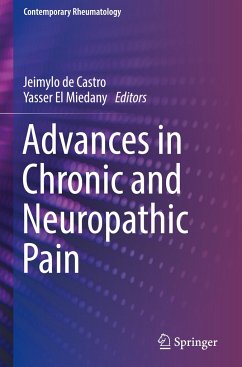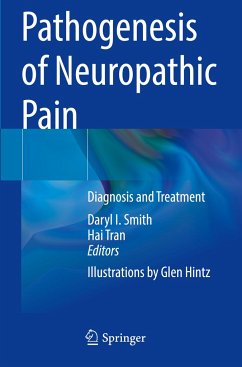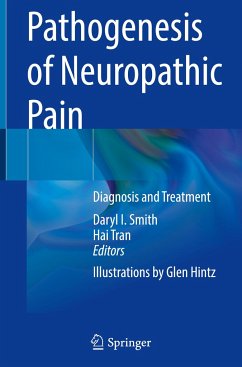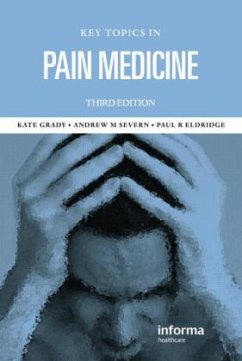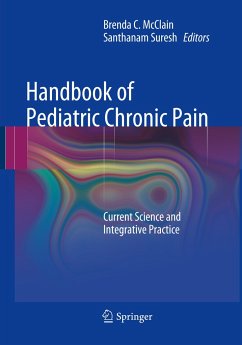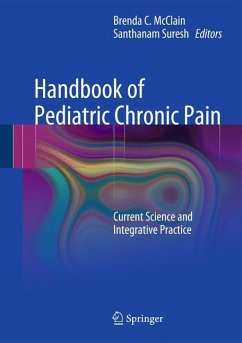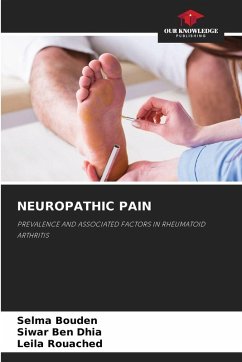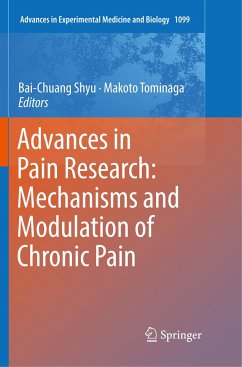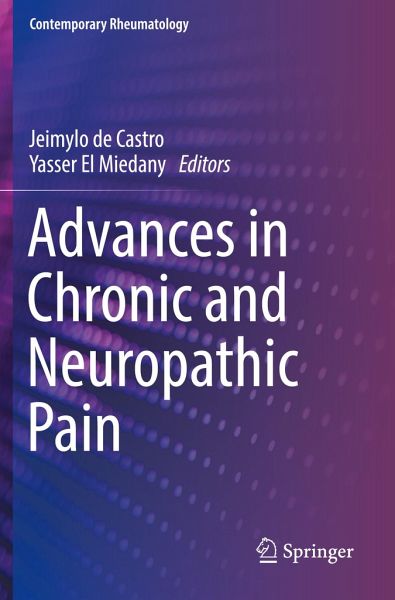
Advances in Chronic and Neuropathic Pain
Versandkostenfrei!
Versandfertig in 6-10 Tagen
83,99 €
inkl. MwSt.

PAYBACK Punkte
42 °P sammeln!
This book is an in depth guide to chronic and neuropathic pain. The issue of chronic and neuropathic pain is very prevalent, yet only a fraction of the symptoms and root causes, as well as potential treatment plans, are properly understood. Additionally, less than half of cases are accurately identified and properly treated. The existing drugs, although classified as very strong and powerful, cannot provide lasting relief to chronic and neuropathic pain. Thus, with all the unique features of this condition, this book presents a systematic way of diagnosing and approaching this condition so eve...
This book is an in depth guide to chronic and neuropathic pain. The issue of chronic and neuropathic pain is very prevalent, yet only a fraction of the symptoms and root causes, as well as potential treatment plans, are properly understood. Additionally, less than half of cases are accurately identified and properly treated. The existing drugs, although classified as very strong and powerful, cannot provide lasting relief to chronic and neuropathic pain. Thus, with all the unique features of this condition, this book presents a systematic way of diagnosing and approaching this condition so every practitioner can appropriately treat their patients.
In addition to introducing key concepts, like classification of chronic pain and the challenges patients and practitioners face when dealing with and treating chronic and neuropathic pain, this book also covers different syndromes that can lead to neuropathic pains. It discusses how to monitor progress by using outcome measures, the presence of chronic and neuropathic pain in children and young adults, and the pathophysiology of neuropathic pain as it relates to the release of pro-inflammatory cytokines. Interestingly, the latter is not presently addressed except with the usual pain drugs for general pain-this book aims to revolutionize the approach to chronic and neuropathic pain by exploring it separately from the clinical approach to general pain. It is interesting to note that these cytokines require a specific mode of action if we want to neutralize them in our system, and this concept will be discussed in the regenerative intervention sections. Since it is so necessary to address the many factors to chronic and neuropathic pain as laid out in the proposed table of contents, it is also critical include as varied authors as possible to address this condition from all areas being covered. The team assembled to author the chapters included in this text come from diverse backgrounds of practice and clinical and research interests, from physical medicine and rehabilitation to anesthesiology to radiology and interventional pain medicine.
This is an ideal guide for all clinicians caring for patients with chronic and neuropathic pain.
In addition to introducing key concepts, like classification of chronic pain and the challenges patients and practitioners face when dealing with and treating chronic and neuropathic pain, this book also covers different syndromes that can lead to neuropathic pains. It discusses how to monitor progress by using outcome measures, the presence of chronic and neuropathic pain in children and young adults, and the pathophysiology of neuropathic pain as it relates to the release of pro-inflammatory cytokines. Interestingly, the latter is not presently addressed except with the usual pain drugs for general pain-this book aims to revolutionize the approach to chronic and neuropathic pain by exploring it separately from the clinical approach to general pain. It is interesting to note that these cytokines require a specific mode of action if we want to neutralize them in our system, and this concept will be discussed in the regenerative intervention sections. Since it is so necessary to address the many factors to chronic and neuropathic pain as laid out in the proposed table of contents, it is also critical include as varied authors as possible to address this condition from all areas being covered. The team assembled to author the chapters included in this text come from diverse backgrounds of practice and clinical and research interests, from physical medicine and rehabilitation to anesthesiology to radiology and interventional pain medicine.
This is an ideal guide for all clinicians caring for patients with chronic and neuropathic pain.



